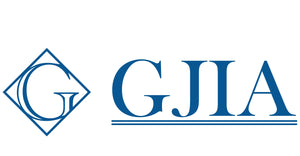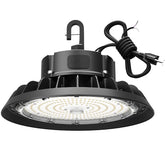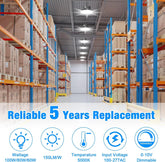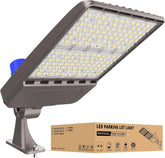Industrial LED High Bay Lighting Selection and Deployment Guide: Intelligent Solutions from Theory to Practice
I. Key Challenges: Three Core Issues in New Factory Lighting
In high-end manufacturing sectors like automotive, aerospace, and 3C electronics, workshop lighting systems directly impact production efficiency, quality control, and worker safety. According to U.S. Department of Energy (DOE) research, 68% of industrial accidents are linked to inadequate lighting, while poor lighting layouts waste over $150,000 annually per 10,000 m² in energy costs. This article addresses three critical questions:
- How to accurately calculate fixture quantities (How many high bay lights do I need?)
- How to determine optimal installation spacing (High Bay light installation interval)
- How to tailor solutions for specific operational scenarios
II. Scientific Calculations: Methodology for Fixture Quantity Estimation
STEP 1: Collecting Baseline Parameters
| Parameter Type | Collection Standard | Example Values |
|---|---|---|
| Workshop Dimensions | Length × Width × Height (ft/m) | 200ft × 150ft × 30ft |
| Target Illuminance | IESNA RP-7 Standard | 750 lux (assembly)/200 lux (storage) |
| Reflectance | Wall/Ceiling/Floor Materials | 30%/50%/20% |
STEP 2: Lumen Method Formula
- N: Number of fixtures
- E: Target illuminance (lux)
- A: Area (m²)
- F: Luminous flux per fixture (lm)
- UF: Utilization factor (0.6–0.8)
- MF: Maintenance factor (0.7–0.8)
Case Study:
A new energy vehicle battery workshop (60m × 40m × 10m) uses G GJIA HB-200W (30,000 lm) for 750 lux assembly areas:
III. Layout Optimization: Golden Rules for Spacing and Light Distribution
1. Mounting Height vs. Spacing
| Fixture Type | Recommended Height | Max Spacing Ratio | Applications |
|---|---|---|---|
| G GJIA Adjustable-300W | 25–45 ft | 1:1.2 | Aircraft manufacturing/logistics centers |
| G GJIA HB-200W | 15–30 ft | 1:1.5 | Automotive assembly/electronics workshops |
2. Light Distribution Strategies
- Narrow Beam (60°): For heights >30 ft (e.g., G GJIA Supper Series 400W)
- Wide Beam (120°): For low-ceiling areas <20 ft (e.g., batwing optics in HB-200W)
- Asymmetric Optics: Dense shelving zones (70% downward light output)
Field Data: A semiconductor cleanroom using G GJIA Supper Series improved illuminance uniformity from 0.58 to 0.82 while reducing fixtures by 22%.
IV. Practical Solutions: G GJIA Product Matrix and Scenario Applications
1. Flagship Product Comparison
| Model | G GJIA Adjustable-300W | G GJIA HB-200W | G GJIA Adjustable Series 400W |
|---|---|---|---|
| Luminous Flux | 45,000 lm | 30,000 lm | 60,000 lm |
| Efficacy | 150 lm/W | 150 lm/W | 150 lm/W |
| CCT Range | 3000K–6000K adjustable | 5000K fixed | 4000K/5700K dual mode |
| Protection Rating | IP66 | IP65 | IP67 |
| Smart Controls | 0-10V/DALI-2 | Microwave sensor | LiFi positioning |
2. Scenario-Specific Solutions
-
Heavy Manufacturing:
➤ Combo: G GJIA Supper Series 400W (main) + Adjustable-300W (fill)
➤ Layout: 45 ft height, 55 ft spacing, 750 lux@floor -
Cold Storage Warehouses:
➤ Cold-optimized: G GJIA HB-200W-T (-40°C startup)
➤ Anti-condensation: Built-in heating film (<5W power) -
Hazardous Areas:
➤ Certifications: Class I Div 2 + IECEx
➤ Recommended: Supper Series EX (304 stainless steel housing)
V. Engineering Standards: Installation and Inspection Protocols
1. Installation Criteria
-
Vibration Resistance:
➤ Displacement <0.5mm at ≤200Hz vibration (per IEC 60068-2-6)
➤ All G GJIA fixtures pass MIL-STD-167-1A naval testing -
Wiring Specifications:
➤ Power cables: 12AWG THHN (90°C rated)
➤ Terminals: Silver-plated copper
2. Inspection Tools
-
Essential Equipment:
➤ Lux meter (CIE S 025 compliant)
➤ Flicker meter (SVM <0.4)
➤ Thermal imager (housing ΔT <25°C)
Case Study: A North American automotive plant using G GJIA solutions achieved:
✅ 0.98 power factor (exceeds DOE 0.9 requirement)
✅ UGR<19 (glare control in precision zones)
✅ Annual energy use reduced from 1.2MWh to 0.38MWh
VI. Industry Trends: Smart Lighting and Sustainability
1. Advanced Smart Controls
- Digital Twin Systems: Real-time workshop mapping via G GJIA Cloud Platform
- Optical Positioning: ±15cm material tracking with Supper Series LiFi
- Carbon Management: DLC 5.1-certified products reduce Scope 2 emissions
2. Total Cost of Ownership (TCO)
| Cost Category | Traditional (400W MH) | G GJIA HB-200W | Savings |
|---|---|---|---|
| Initial Purchase | $120/fixture | $280/fixture | -133% |
| 10-Year Energy Cost | $58,320 | $17,496 | 70% |
| Maintenance | $9,600 | $1,200 | 88% |
| 10-Year TCO | $68,840 | $19,696 | 71% |
Lighting the Future of Smart Manufacturing
Under the dual drivers of Industry 4.0 and carbon neutrality, lighting systems have evolved from auxiliary facilities to core infrastructure. G GJIA Lighting’s Supper Series and HB Series empower global manufacturers with precision control, smart connectivity, and unparalleled longevity, transforming "visibility" into "clarity" and "intelligence". Professionals are invited to share experiences and explore the limitless potential of industrial lighting.








